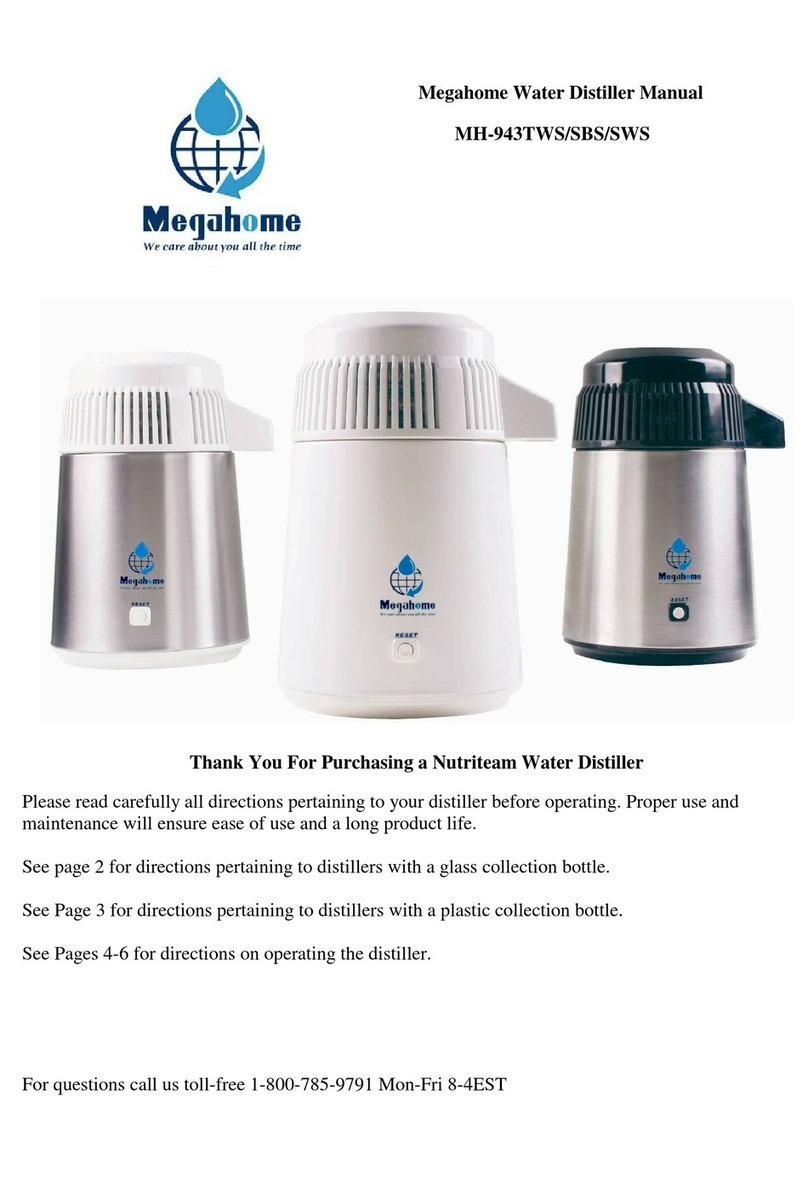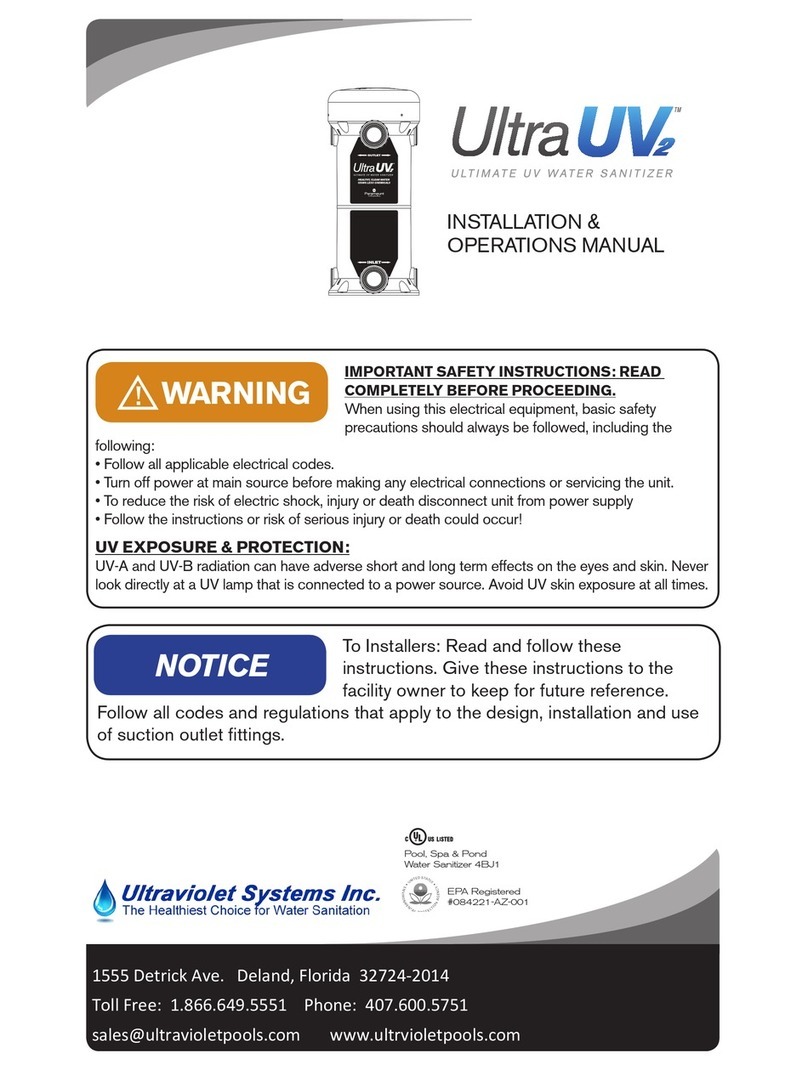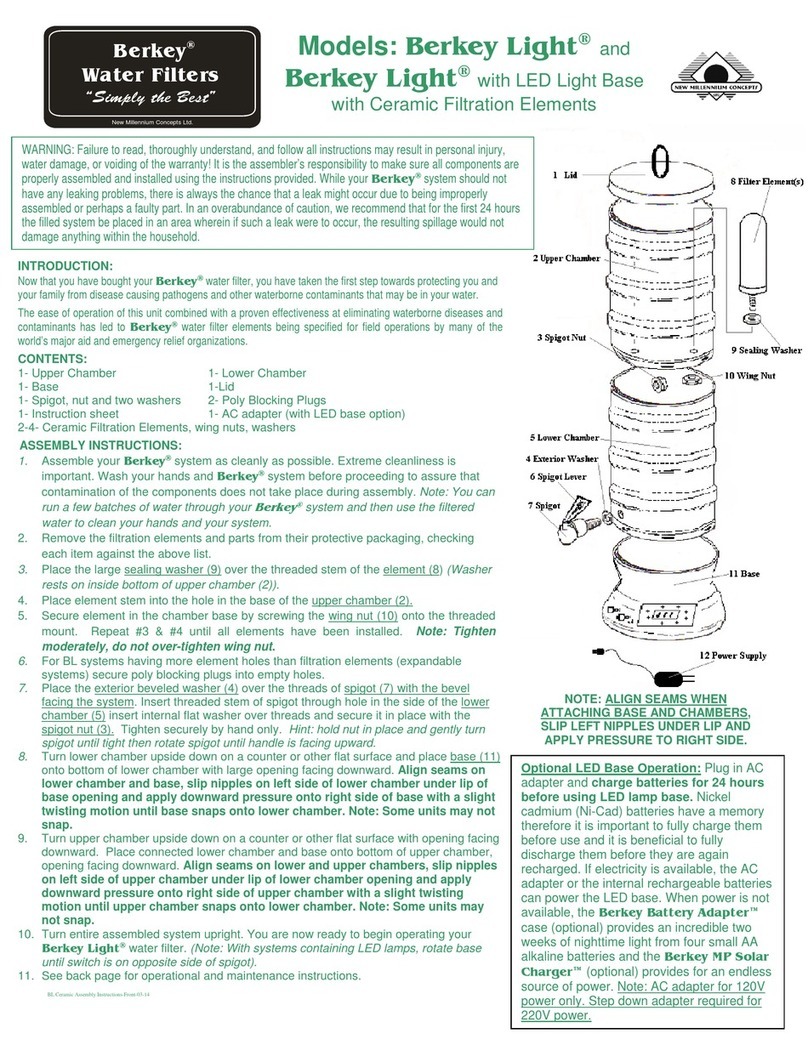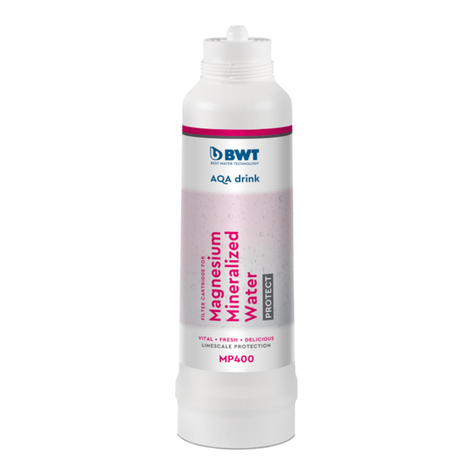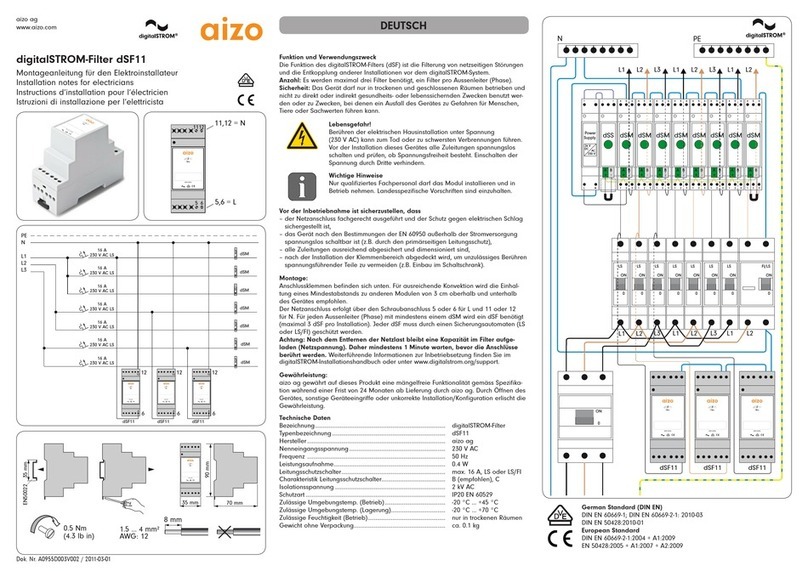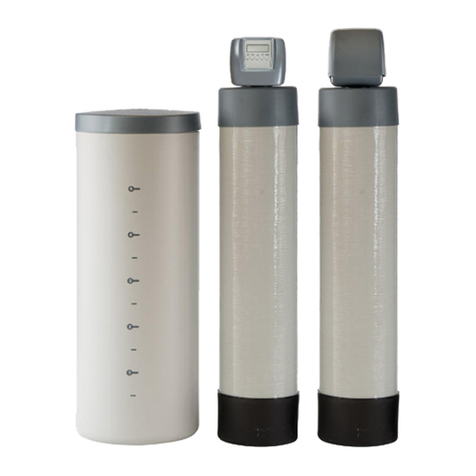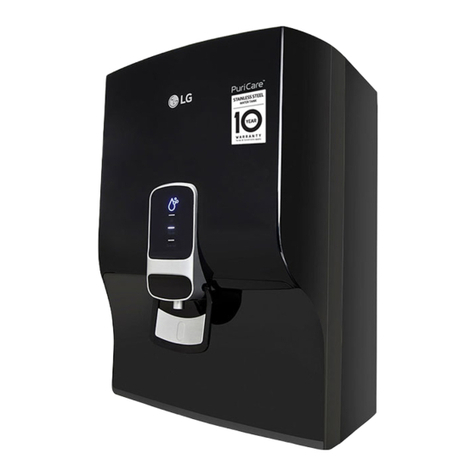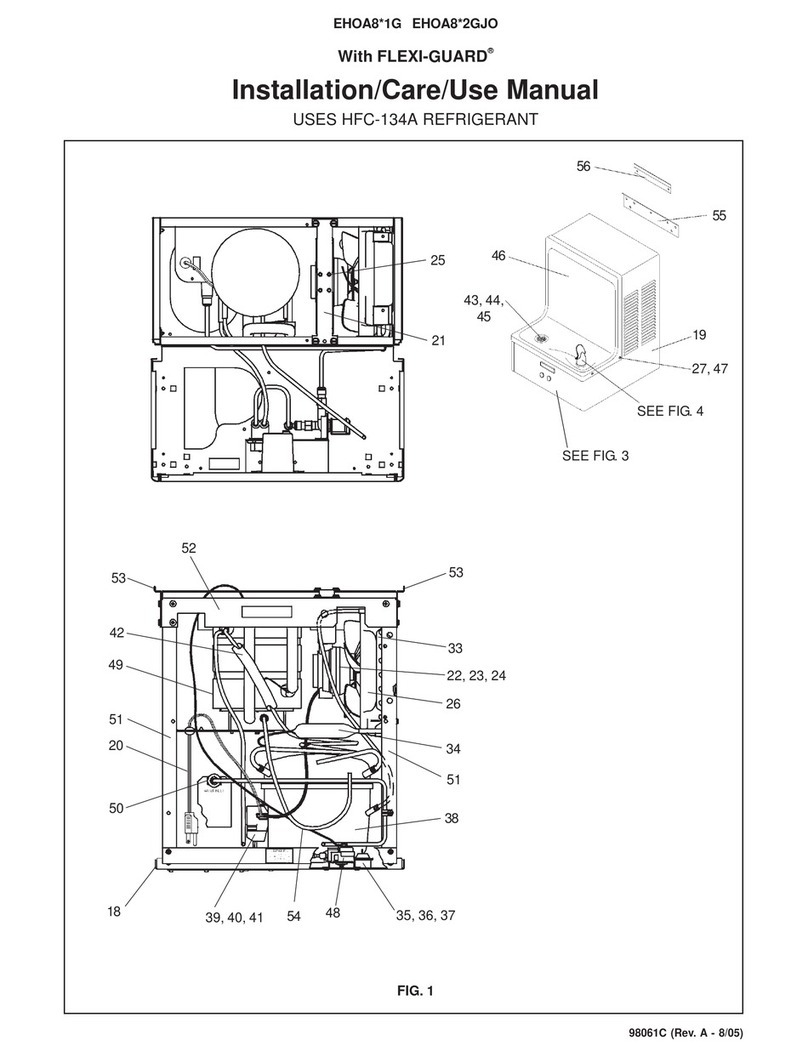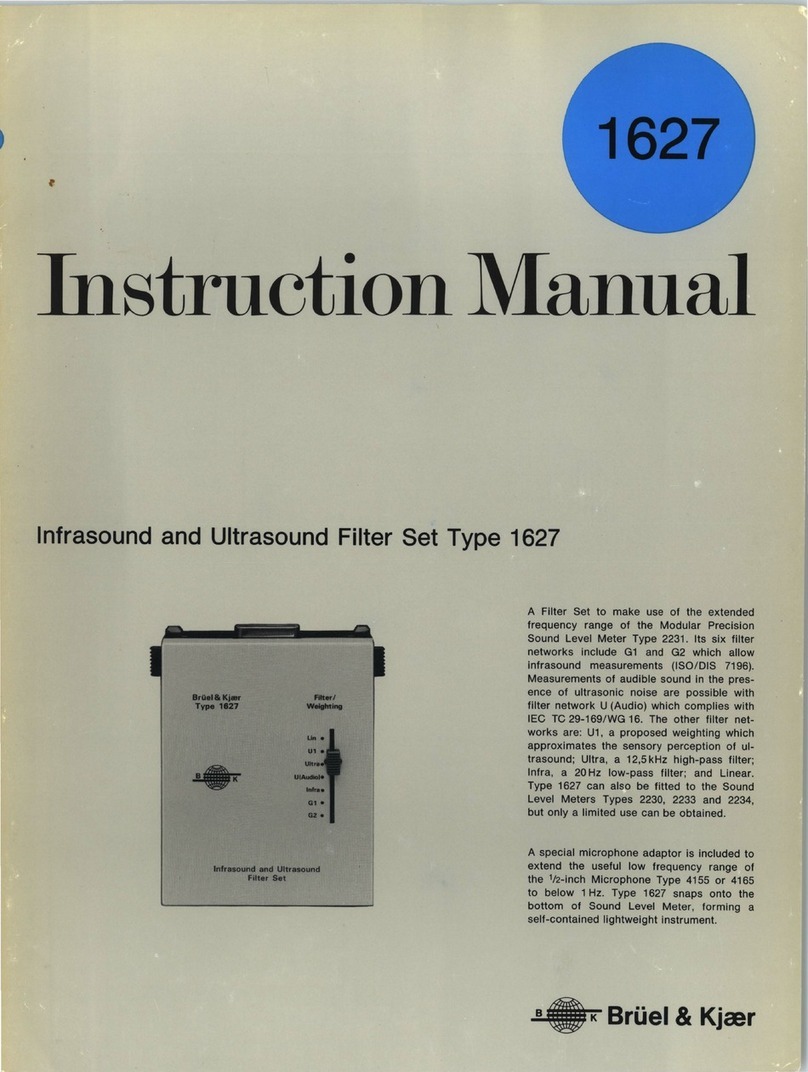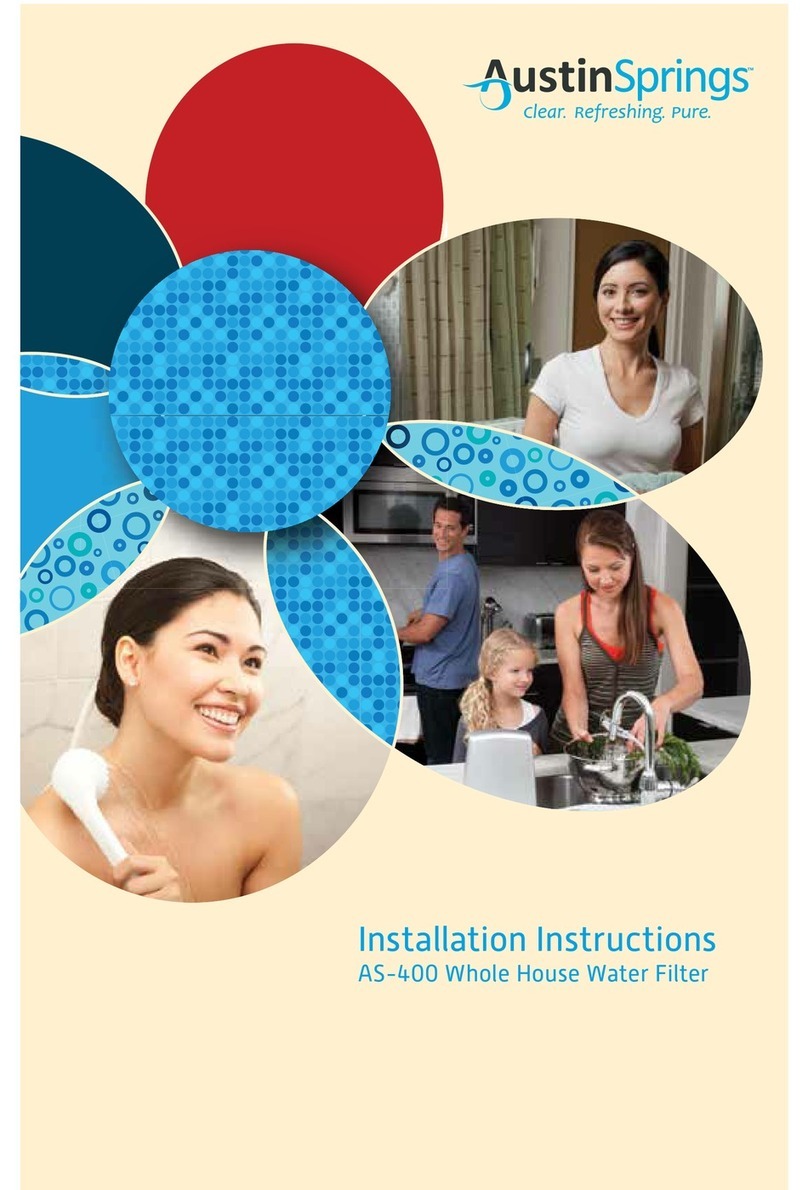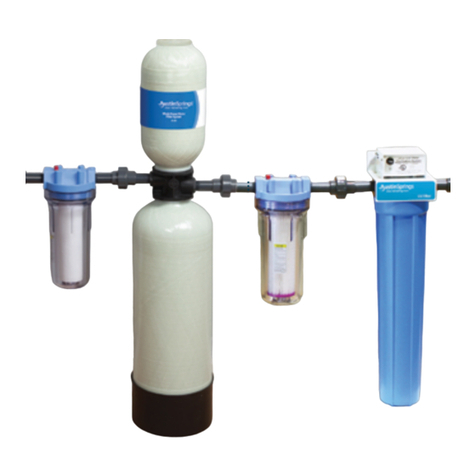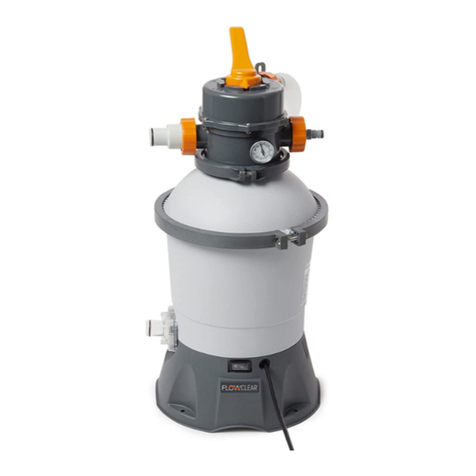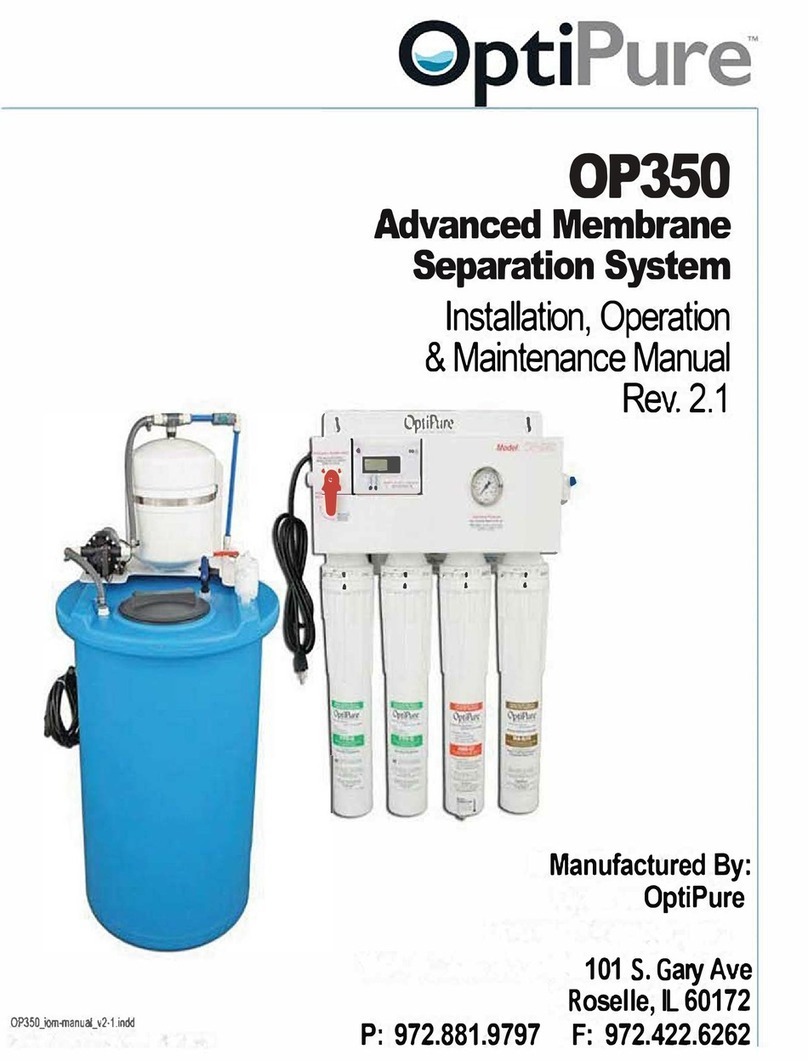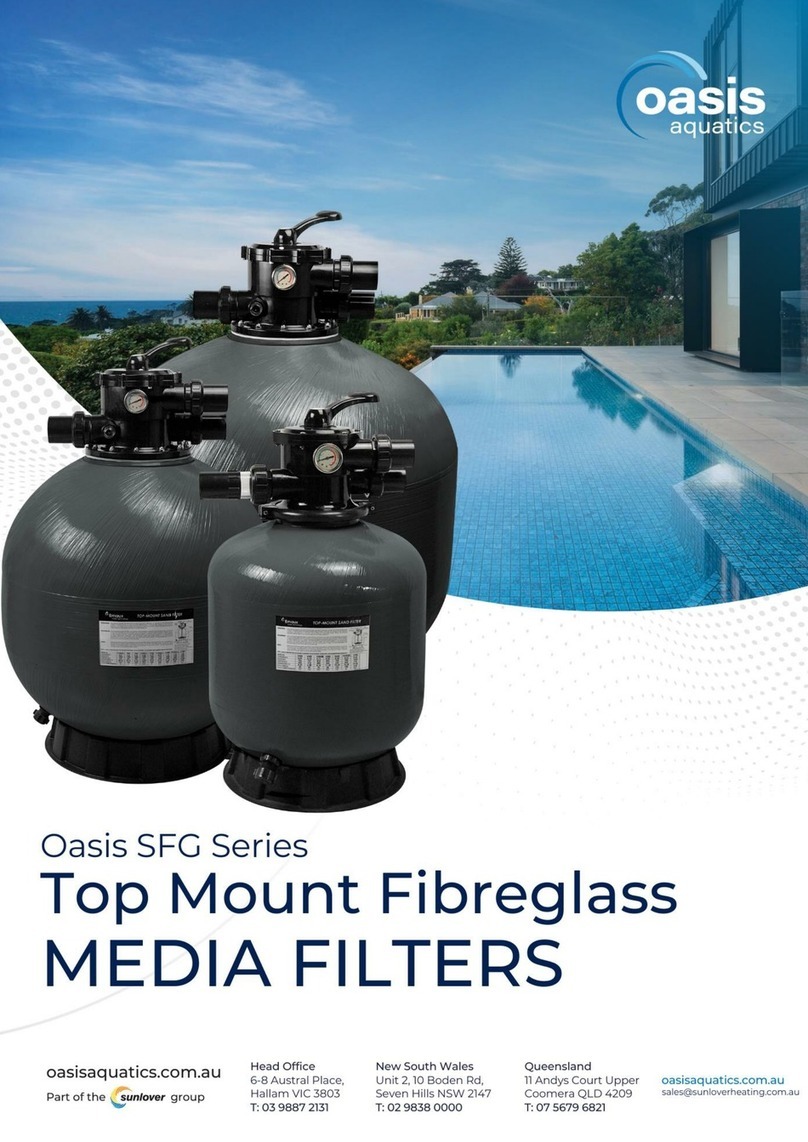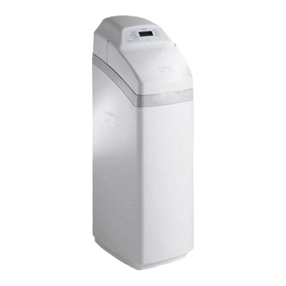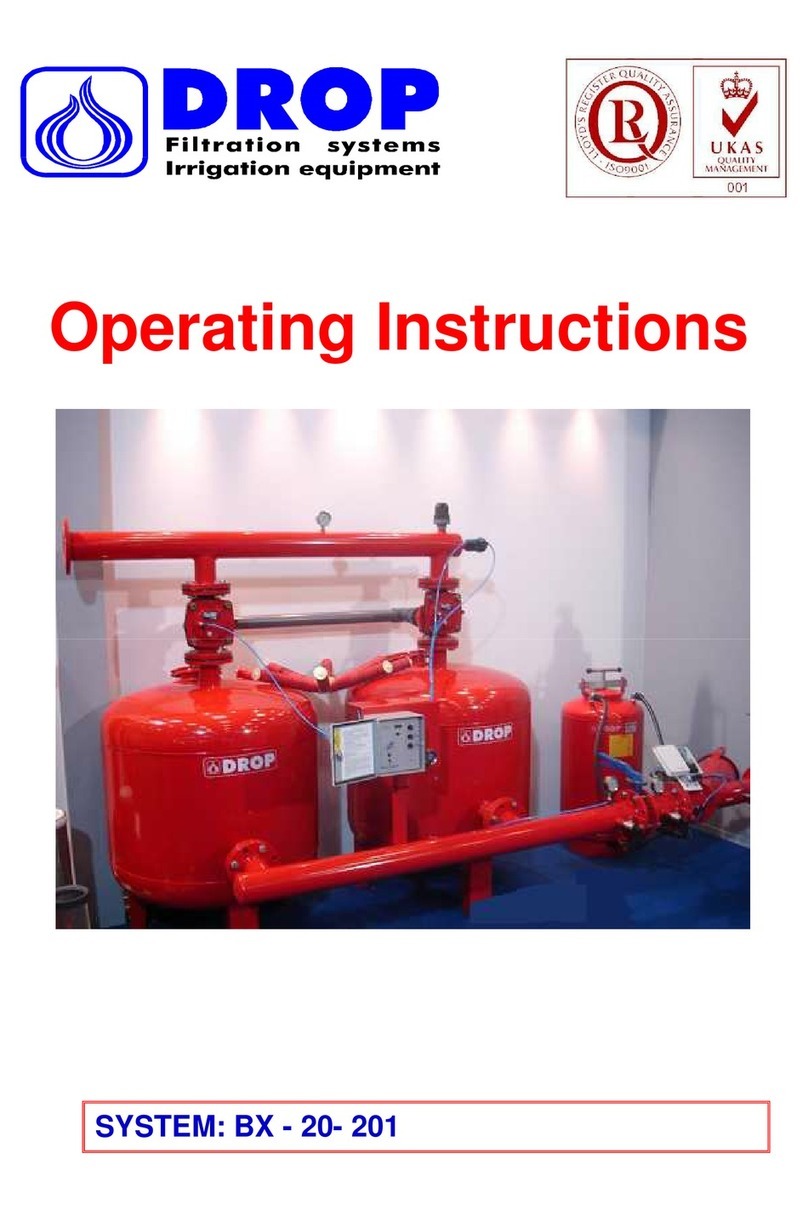98
Step 6: Install Reverse Osmosis Membrane
1 Disconnect the white 1
–
4"tubing from the Inlet quick-fitting on the membrane housing cap (see
Tip #1). Unscrew the cap. (The small housing wrench may be needed to loosen the cap.)
2 Remove the membrane from its sealed bag. Follow the flow direction sign on the membrane,
and firmly push into the housing. Insert the small end (two black O-rings) head first until the
large end is even with the housing opening.
3 Before screwing the housing cap back on, check that the O-ring is fitted evenly on the
membrane housing (cap does NOT have O-ring). Use the small housing wrench to tighten about a
half-turn. Do not overtighten. Do not reconnect tubing at this point.
Step 8: System Start Up
1 Organize tubing and check each for kinks. Turn Tank Shut-O Valve to “OFF”. Have a towel
ready to catch leaks.
2 Keep the tubing to the RO membrane inlet unattached (Step 6), flush the first three stages into
a bucket until the water runs clear. Then re-connect the tubing to the RO membrane. (Tip #1).
3 Turn on the Feed Water Adapter valve. Then, slowly turn on the Cold Water Supply Valve and
check for leaks. Leaks can result when: tubing is not fully inserted, the 0-ring is not secure,
Housing/Cap are not tightened properly.
4 Aer any leaks have been resolved, turn on the RO Drinking Faucet.
5 RO water should start dripping within 5 minutes. Let run for 10 minutes, allowing the system
(except tank) to flush. Water will be dark due to loose carbon from filters, it will turn clear.
6 Turn o the RO Drinking Faucet. Turn Tank Shut-O Valve to “ON”. Allow tank to fill. It should
take between 11
–
2to 3 hrs (longer for colder weather).
7 When tank is full, turn on RO Drinking Faucet to flush water from tank. DO NOT use first tank
of water. Water will surge from faucet. When it slows to a trickle, the tank is empty and can be
refilled for use.
8 For the first two weeks following installation,
check for leaks daily. *Optional: Place a bucket
under system or use the included Water
Detector Alarm in case of leaks.
9 Test RO water periodically to verify eective
reduction of total dissolved solids (TDS). If the
TDS of source water is 100ppm, RO water
should be less than 10ppm.
Congratulations!
Now that your system is installed
enjoy clean healthy water right from your tap.
Step 7: Tubing Hook up
Connect the Tubes as shown.
(See Tip #1)
Faucet Base
Storage Tank
Small Faucet Nipple
Water Feed Adapter
1
2
A TDS meter
is a handheld device that
measures Total Dissolved Solids. TDS
are expressed in units of mg per unit volume
of water (mg/L), or referred to as parts per
million (PPM). With a TDS meter, you can easily
compare the quality of RO water
with your original
source water.
Your system is equipped
with an Automatic Shut-O
Valve allowing your system to turn o
the water supply to the RO system, using
pressure from the pure water side of the
system. It saves water, extends filter life,
and improves the performance of
your unit.
If you have any questions or concern about our
products, please don’t hesitate to call or email
us. We will do all that we can to make your sure
you are delighted with your purchase.
If you are happy with our product and service,
please show your support by writing a product
review on Amazon, even if it’s a simple single
line. It only takes a minute, but means a lot to
us! Thank you!
We provide a 90-day money back guarantee,
one-year Manufacturer Warranty and lifetime
tech support for all of our products. These
benefits are only available, however, when
you confirm your order information and
activate your warranty. You may activate
your warranty by mail or online by going to
AustinSprings.com/warranty.










